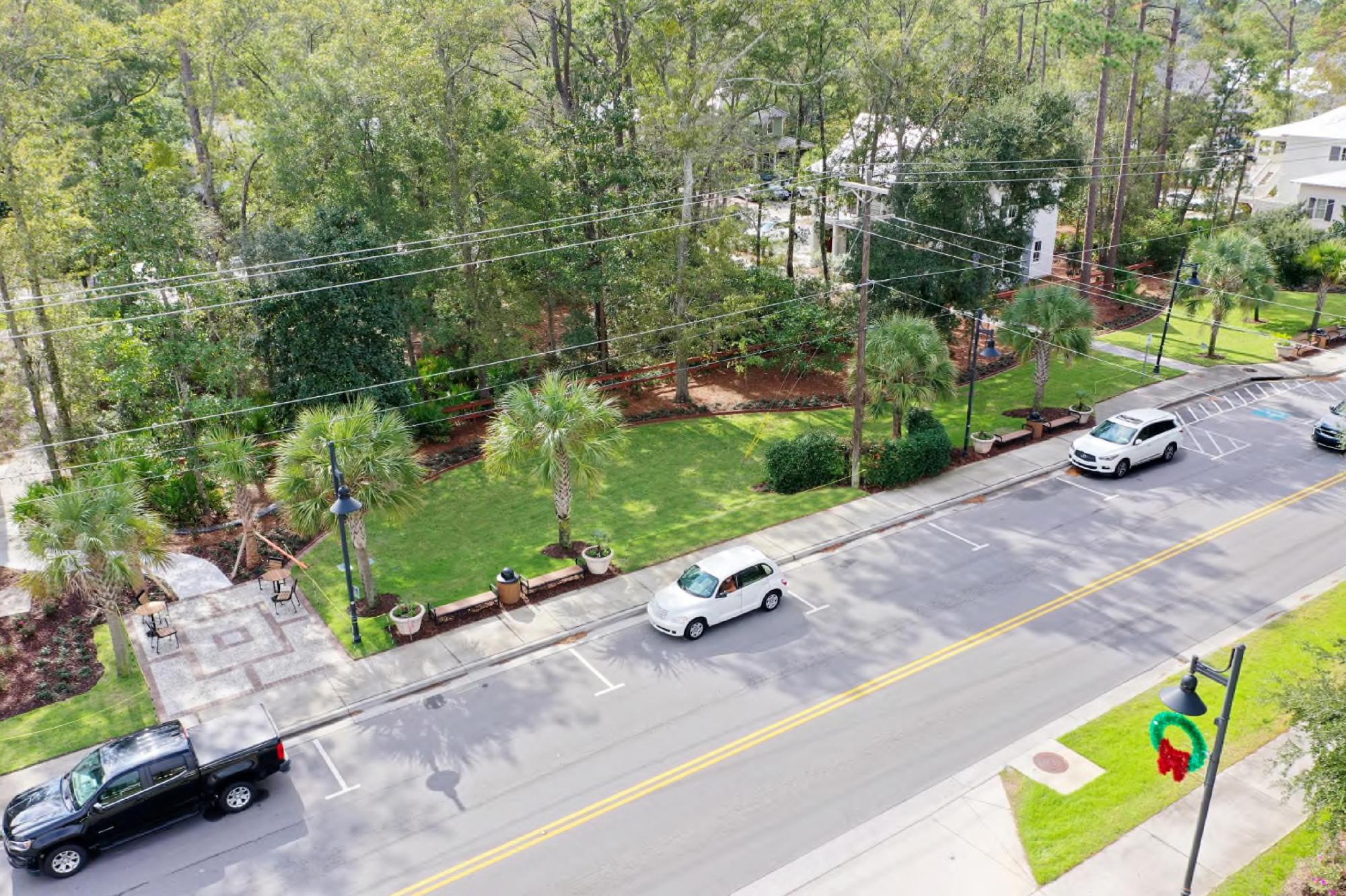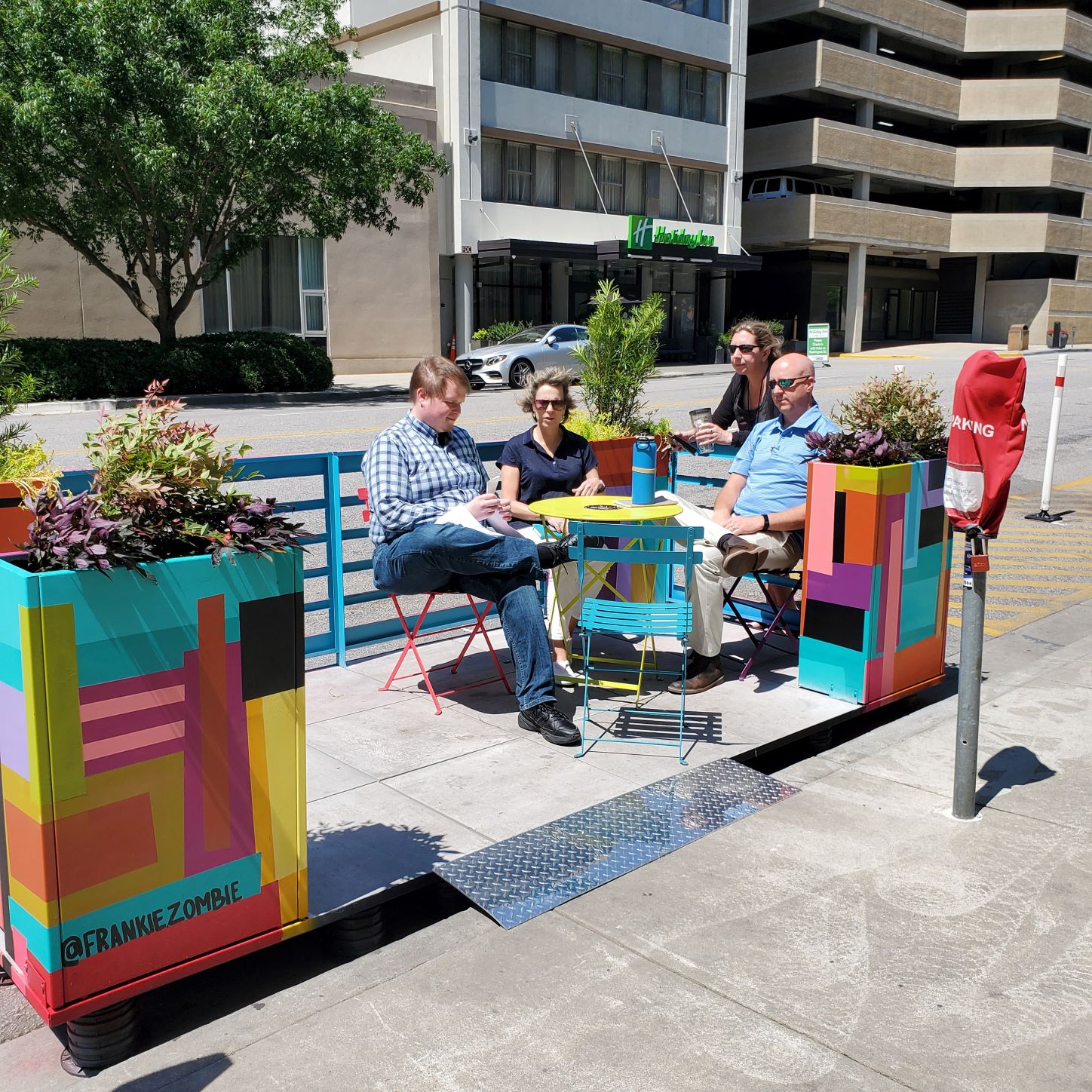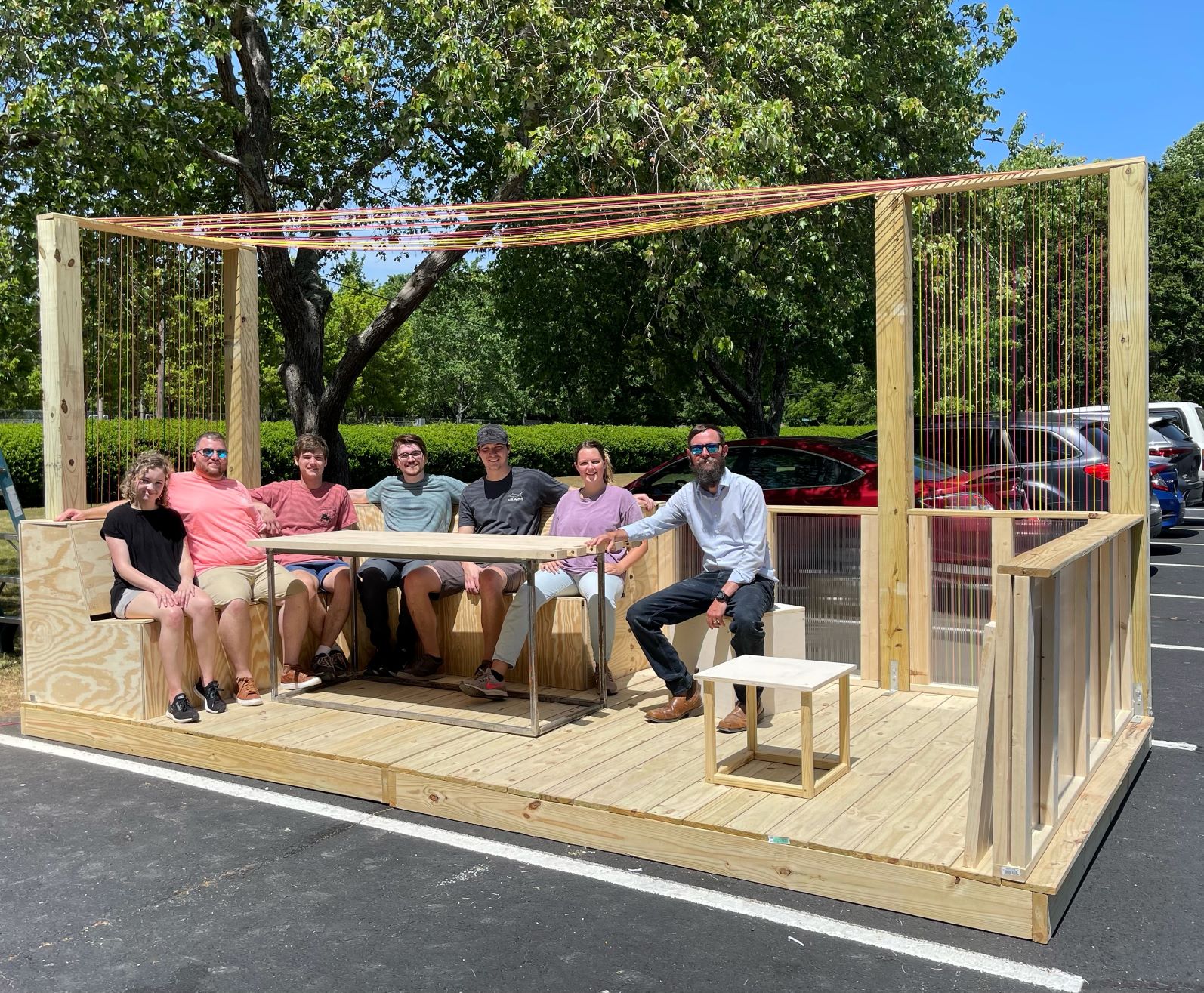While they are small in size, pocket parks and parklets are big additions to cities and towns — offering a hidden surprise, a spot for neighbors to gather or a fun place to sit outdoors on a downtown street.
Pocket parks are easily accessible, small facilities that provide an inviting public area that don’t require the large investment needed for larger parks.

The Town of Bluffton now has two pocket parks, with the May River Pocket Park offering a small plaza with seating, landscaping and sidewalks connecting neighborhoods and developments. It opened last fall, after a resident and local developer donated the land adjacent to the thoroughfare of May River Road and Stock Farm, a mixed-use development, where it’s often used by business owners and pedestrians in the historic district.
“The site is located in the heavily traveled Bluffton Historic District with pedestrian connections to business, shopping and residential areas. The property is situated next to the recently completed May River Streetscape project,” said Pat Rooney, manager of capital improvement projects for Bluffton. “It provides additional green space along the major roadway, and allows expansion of the streetscape beyond just the right-of-way.”
Rooney said the public already has been drawn to the pathways and seating areas, while the landscaping and greenspace has been well received.
“Residents always appreciate the town’s efforts to preserve and enhance greenspace, rather than see more rooftops and parking,” he said.
He said the town council looks for opportunities to preserve open space, historic features and create more parks, with Pritchard Street Pocket Park another example of the town’s effort “to create a small waterfront passive park that provides citizens with views and access to the May River.”
Also gaining in popularity are parklets — public seating platforms that typically are placed in curbside parking spaces. The parklets offer an outdoor gathering area, often with seating, greenery and artwork, and can be used by restaurants for outdoor dining or can be open to anyone who wants to sit and relax outdoors. They have grown in popularity in downtown districts, particularly in the wake of social distancing and outdoor gatherings during the pandemic.

Columbia has two parklets that sit in its busy downtown district: one on Washington Street near Main Street; and one at Hampton and Main streets. Lucinda Statler, Columbia’s planning administrator, said the city first decided to apply for a grant for the parklets in 2020, but the COVID-19 pandemic caused the grant deadline to be extended and the city revised its application.
“We spun the story a little to talk about how important it is to have outdoor spaces because of the pandemic,” Statler said. “We got the grant and then had city support services help put it together. And we worked with [arts and culture nonprofit] One Columbia to get an artist to work on it. It’s been a multi-faceted group effort.”
The city used some leftover grant money to start the parklet at Hampton and Main, aiming to develop the parklets as a pilot program to get people familiar with them.
“It seems like it’s something you can just plop down, but it is a little harder than it seems,” she said, adding that the city must take into consideration who maintains the streets where the parklets are located, curbs and sloped gutters, as well as drainage and available shade.
“You need to find a location that has support from adjacent businesses. Not everybody wants parking spaces to go away. There are a lot of things that have to be thought about,” she said.
But Statler said parklets are definitely worth the work and effort to create them.
“It’s a great way to add people to occupy the street, especially where the sidewalk is tight. It adds public space to the city,” she said. “Ours are public art pieces when nobody occupies them. We engaged with two artists to make them lively and fun and vibrant on the street. They make more spaces for people and add life to the street.”
In the Upstate, Clemson University students teamed with the mayor of West Pelzer to create a parklet for the Town of Central.
West Pelzer Mayor Blake Sanders, who owns a planning and landscape firm that focuses on ways to engage people in public places, particularly in rural and small communities, also teaches an architecture class at Clemson University. The class focuses on community engagement and enrichment, and students are required to dive into a community, design a solution to a problem, and then build it. Last year, the students decided to explore parklets.
“Parklets add a different dimension to a town or city. First, parklets give a vibe of being hip, cool and whimsical. Frankly, they are just fun to be in and explore,” Sanders said “Second, parklets increase revenue. With more spaces to engage the public, perhaps sit and dine, then the more revenue generated by local businesses.”

On the first day of class, students talked about their own hometowns and discussed how even attractive downtowns too often force people inside a building as soon as they get out of the car.
“How do we make a space for the public to use that feels connected? We couldn’t build a plaza, so parklets grew out of that,” Sanders said.
Sanders developed a partnership where the students could interview and interact with downtown development program Main Street South Carolina and Jenny Boulware, its director. The parklet’s design, Sanders said, can make it suitable for many communities.
“The specifics of the interior of the parklet allow for internal circulation, seating, bar level leaning, spaces for planters, and, most importantly, social interaction,” he said.
The parklet was designed to be flat packed and delivered on two pallets. It was constructed by students on-site at Clemson and then dismantled and shipped to Central.
“The design package for the parklet also included step-by step instructions, along with labeled parts and pieces, for easy reconstruction – think like an Ikea manual,” he said.
In Central, it was installed next to the caboose on Main Street, near the town’s farmers market, and assembled by town and Main Street Central staff.
His advice for other cities adding parklets: “First, know the space will be popular. A single parking space is not large enough for the amount of activity and programmable space you will want. Consider two parking spaces, if funding and opportunity allows.”
Sanders added that making a parklet capable of breaking down and moving can help.
“Once you install one in one block of town, you’ll hear wants and needs from other areas. Make it portable so it can appear during special events, grand openings, et cetera. They shouldn’t be permanent,” he said. “Have some fun component that encourages children to interact. Finally, promote it using all means and methods. It’s important that people know what the purpose of the parklet is, how long it will be there and why it exists.”
